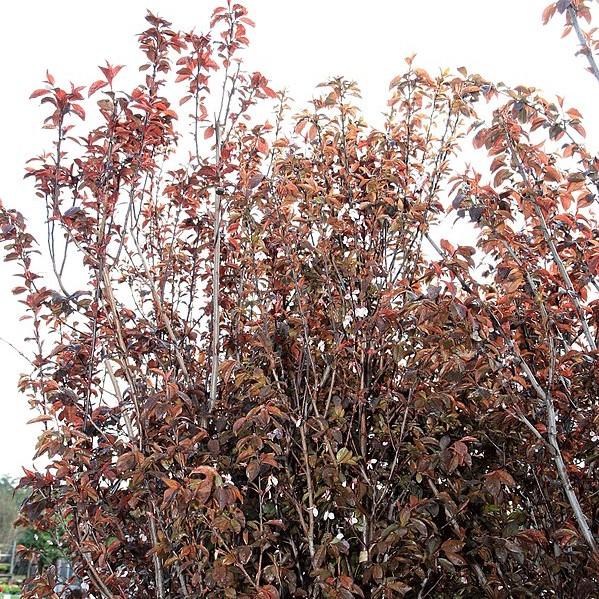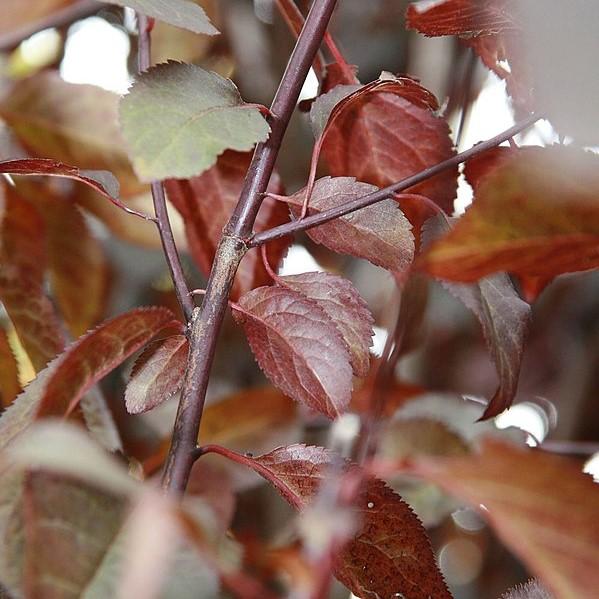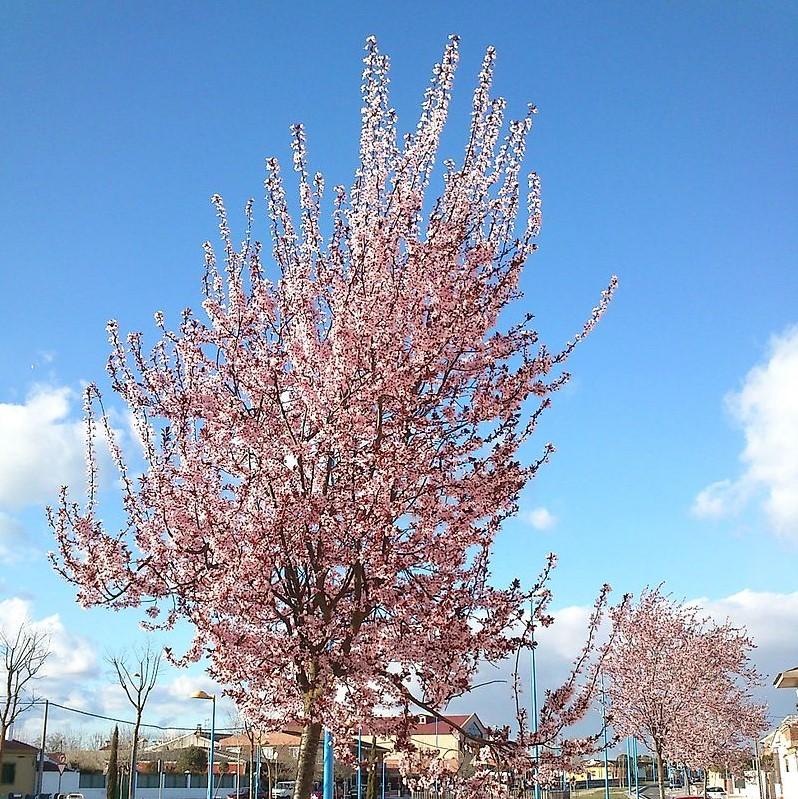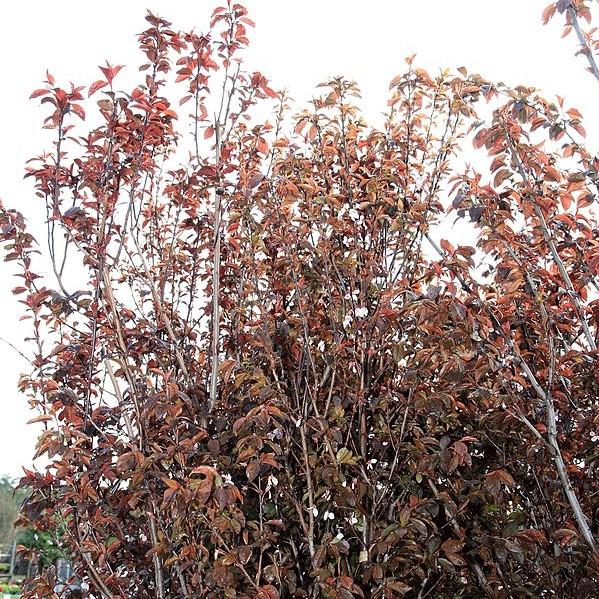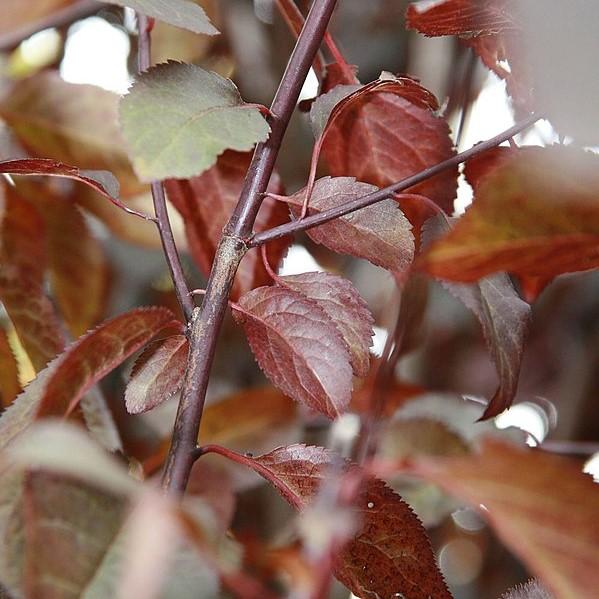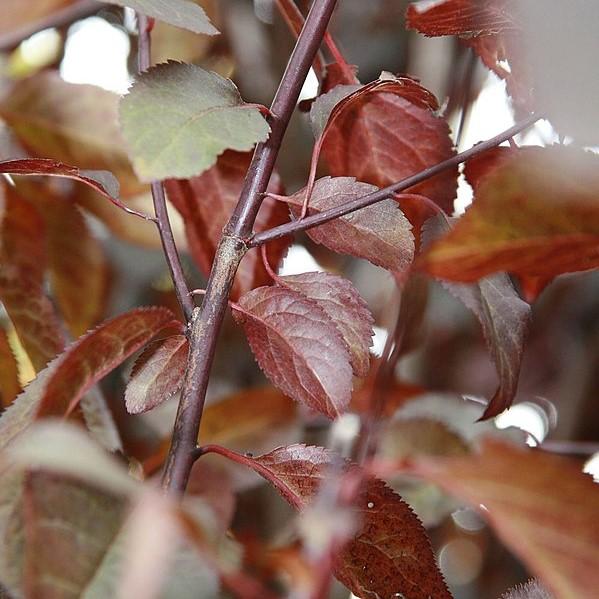Krauter Vesuvius Cherry Plum
Prunus cerasifera 'Krauter Vesuvius'
- In stock, ready to ship
- Backordered, shipping soon
- Locally Grown
Krauter Vesuvius Cherry Plum, also known as Prunus cerasifera 'Krauter Vesuvius,' is a small deciduous tree that is prized for its ornamental qualities. Here's some information about the Krauter Vesuvius Cherry Plum:
-
Appearance: The Krauter Vesuvius Cherry Plum is a compact tree that typically grows to a height of 15 to 20 feet (4.5 to 6 meters) with a similar spread. It has an upright, vase-shaped habit with dense branching. The leaves are oval-shaped and emerge as a deep purple color, gradually transitioning to a dark green as they mature. In early spring, the tree produces clusters of pink flowers that cover the branches before the leaves emerge.
-
Fruit: As a cherry plum variety, the Krauter Vesuvius may produce small, edible fruits. The fruits are typically small and round, resembling cherries or plums. They are usually red or purple in color and have a sweet-tart flavor. However, it's important to note that the fruit production of ornamental cherry plum varieties like Krauter Vesuvius is often minimal compared to fruiting cultivars.
|
Type: |
Tree |
|
Origins: |
western Asia and the Caucasus |
|
Height: |
15’ - 20’ |
|
Spread: |
15’ - 20’ |
|
Spacing: |
18’ |
|
USDA Hardiness Zone: |
5 - 8 |
|
Culture: |
Full Sun |
|
Bloom Color: |
Pink |
|
Season of Interest: |
Spring |
MAINTENANCE NEEDS: Low Maintenance. Pests and diseases can be a problem. Watch for aphids, scale, borers, caterpillars, beetles and spider mites. Potential diseases include leaf spot, dieback, leaf curl, powdery mildew, root rot, and fireblight. Cherries have weak wood and are susceptible to breakage.
LANDSCAPE USES: Accents or Group Plantings, Borders, Woodland Gardens, Naturalized Areas, Wildlife Gardens, and Shade Tree.
COMPANION PLANTS: Lilac, Viburnum, Coneflower
IMAGES: (1) Photo by David J. Stang, Prunus Krauter Vesuvius 4zz, CC BY-SA 4.0, (2) Photo by David J. Stang, Prunus Krauter Vesuvius 2zz, (3) CC BY-SA 4.0, Rondador, Ciruelo en flor Puente Duero, CC BY-SA 4.0
Hahira Nursery takes pride in growing high-quality, fresh, healthy plants and ensuring they are delivered safely, on time, and with little to no damage so they are ready to be planted.
Despite all of our best efforts, once the plants have left our nursery, there are many variables outside of our control that can cause plants, flowers, trees, shrubs, or grasses to not thrive as they should. Plants are living organisms and are susceptible to a number of different environmental and care factors that are outside of our control.
Our goal is to build strong relationships with our customers and we always want to make things right, but we cannot always guarantee what happens once the plants are outside of our nursery, how you care for the plants, if they’re in the correct growing zones, weather damage, soil conditions, insect infestations, etc..
If you have any questions or concerns about a purchase you’ve made, please email us at info@hahiranursery.com and we will work with you on a case-by-case basis to the best of our ability.
Please note that all living organisms are not identical and their coloring, size, and shapes may differ from what you see online in our store. Each plant has its own characteristics that are impacted by the time of year, growth cycle, weather, and other elements which will cause them to look different than their photos.


